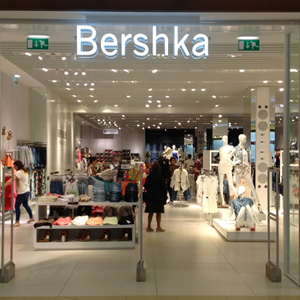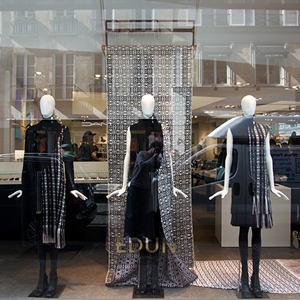DATA
THE PROS:
In 2014, Kate Spade developed the On Purpose program to empower women through trade. The initiative brought together individual artisans in the community of Masoro, Rwanda and taught them how to build a for-profit business. ADC, the resulting manufacturing facility has over 150 full-time artisans who are paid a monthly salary regardless of product sales. Kate Spade has integrated the facility into its supply chain, interacts with them in the same way it does with its other suppliers and purchases goods from them year round.
Kate Spade discloses a summary of complaints and inquiries from workers via confidential reporting channels for the year 2014.
In 2010, Kate Spade conducted a carbon footprint analysis (for the year 2009) with the assistance of Clean Agency. The analysis covered the brand’s operations in the United States (including offices, distribution centers and stores), as well as the transport of its goods from manufacturers (domestic and abroad) to distribution centers and stores in the US.
Kate Spade intends to use the findings of its 2010 carbon footprint analysis to inform and evolve its corporate environmental strategy, as well as to provide a benchmark for future efforts. The brand has not communicated updated information on this initiative.
THE CONS:
Kate Spade does not publicly disclose a list of the countries in which it manufactures or a list of supplier names and addresses.
It is unclear if the brand can trace its entire supply chain.
The brand does not publicly share any goals that work towards improving the environmental impact of its supply chain.
/ As of January 3, 2022, Kate Spade has 93 US Specialty Retail Stores, 32 Foreign Specialty Retail Stores, 57 US Outlet Stores and 14 Foreign Outlet Stores.
/ As of January 3, 2022 the brand had approximately 3500 full-time employees worldwide. It is unclear what levels of its supply chain this number applies to.
/ During 2014, Kate Spade states that they contracted approximately 151 suppliers in 15 countries to manufacture their products.
/ In 2014, South China Morning Post reported that Zhejiang Administration Bureau for Industry and Commerce tested 100 batches of brand name clothing, shoes and handbags. The inspection into bags reportedly found three samples, including one from Kate Spade, failed a shock resistance test which requires the bag remain intact after 400 tests. It broke apart after 63 tests, the report said.
/ The brand owns the Adelington Design Group, a private brand jewelry design and development group that markets brands through department stores and serves jcpenney via exclusive supplier agreements for the Liz Claiborne and Monet jewelry lines. The Company also has a license for the Liz Claiborne New York brand, available at QVC, and Lizwear, which is distributed through the club store channel.
/ The brand states that it contracts manufactures in 15 countries and that a substantial majority of its products are produced in Asia. However, the brand does not disclose a list of countries in which it manufactures.
/ Kate Spade does not publicly disclose a list of supplier names and addresses.
/ It is unclear if the brand can trace its entire supply chain.
/ Kate Spade discloses a summary of complaints and inquiries from workers via confidential reporting channels for the year 2014.
/ The brand publicly shares its standards of engagement. It is unclear what levels of the supply chain the standards of engagement apply to.
/ The brand contracts Li & Fung as its buying/sourcing agent. Kate Spade states that it collaborates with Li & Fung to develop mutually acceptable audit documents and processes, training the Li & Fung audit staff on the Kate Spade compliance program and communicating the brand’s standards to Li & Fung suppliers and their workers. Li & Fung state that before it contracts a supplier, they are assessed against its Supplier Code of Conduct and relevant standards. Li & Fung has a policy that addresses subcontracting in its code of conduct.
/ The brand states that it encourages all factories to establish internal grievance procedures and that it gives workers the opportunity to report their concerns directly to Kate Spade. The brand also provides contact information on its standards poster to allow workers to confidentially report issues of noncompliance.
/ Kate Spade states that training on its code of conduct has been provided to its agent (Li & Fung), sourcing teams and suppliers throughout the year with the objective of raising awareness on forced labor, child labor and mitigating risk within the supply chain. The brand reports that training focusing specifically on the signs of forced labor and human trafficking has been provided to all internal sourcing managers and quality field managers as well as its sourcing agent’s staff. In fiscal 2014, Kate Spade collaborated with Li & Fung to provide supplier training covering best practices in health and safety and human resources in China and India.
/ Suppliers are required to post the Kate Spade & Company Standards of Engagement in the workers’ native language at all factories where its merchandise is being made. Additionally the brand has utilized various avenues to educate workers about its Standards and their rights. Examples include creating cartoon booklets to better illustrate the Standards and involving nongovernmental organizations to train workers
/ In 2010, Kate Spade conducted a carbon footprint analysis (for the year 2009) with the assistance of Clean Agency. The analysis covered the brand’s operations in the United States (including offices, distribution centers and stores), as well as the transport of its goods from manufacturers (domestic and abroad) to distribution centers and stores in the US.
/ Kate Spade intends to use the findings of its 2010 carbon footprint analysis to inform and evolve its corporate environmental strategy, as well as to provide a benchmark for future efforts. The brand has not communicated updated information on this initiative.
/ Kate Spade states that it is committed to working with third-party vendors and service providers who, at a minimum, uphold the relevant environmental laws, regulations and policies of the countries in which they do business. The brand does not communicate any information on how it achieves this.
/ The brand states that it strives to evolve and implement its Corporate Environmental Policy focused on two areas: waste reduction and resource conservation. It is unclear whether this policy applies to its supply chain.
/ The Humane Society reported in 2015 that Kate Spade does not sell animal fur or is phasing in a fur-free policy. There is no information available from the brand.
/ We don’t have any information on:
- the sustainability values of the materials it uses in the brand’s products
- animal welfare policies
- hazardous chemical policies and policies that ensure the proper treatment of effluent
- what the brand is doing to reduce its carbon and water footprints in its supply chain
- what the brand is doing to reduce the impact of its products at end of life phase and sustainable packaging policies
/ Kate Spade reports that its distribution centres shall recycle corrugated cardboard via a dedicated compactor or baler. There is no information available on whether or not the brand is doing this currently.
/ Kate Spade states that its locations shall recycle office paper. There is no information available on whether or not the brand is doing this currently.
/ Kate Spade states that lamps which contain hazardous metals such as mercury shall be recycled in accordance with EPA guidelines. There is no information available on whether or not the brand is doing this currently.
/ Kate Spade reports that monitors assessed as obsolete or non-operational shall be picked up for recycling by a company specializing in computer equipment recycling. There is no information available on whether or not the brand is doing this currently.
/ Kate Spade has a centralized energy management system in place to encourage energy conservation. As needed, old lamps, ballasts and light switches at US Distribution Centers and Office locations are replaced with high efficiency lighting such as “green” lamps and ballasts. As needed, light switches are replaced with energy saving motion detector switches.
/ The Kate Spade & Company Foundation supports programs in and around the New York City metropolitan area where its primary offices are located that offer training and increase access to tools that help women become economically empowered.
/ Through its Matching Gift Program, Kate Spade encourages and supports the individual charitable giving of its full-time employees. The brand’s program provides matching funds to employees’ donations up to $10,000 each year to qualified nonprofit organizations. Where employees serve as voluntary board members, the brand’s charitable contributions may be matched at a rate of two to one.
/ In 2014, Kate Spade continued to support its employee volunteering program.
/ The brand states that its relations with its employees are satisfactory and to date it has not experienced any interruption of its operations due to employee issues.
/ The brand no longer has any union agreements.
/ In 2015, WWD reported that Craig Leavitt, CEO of Kate Spade & Co., received $26.2 million in total compensation in 2014, according to a definitive proxy, or Form 14A, filed with the Securities and Exchange Commission.
/ In 2015, Racked reported that a lawsuit had been filed against Kate Spade alleging that Kate Spade’s outlet stores advertise discounts on merchandise that was originally made to be sold at that discounted price, not anything higher.
/ In 2014, Kate Spade developed the On Purpose program to empower women through trade. The initiative brought together individual artisans in the community of Masoro, Rwanda and taught them how to build a for-profit business. ADC, the resulting manufacturing facility has over 150 full-time artisans who are paid a monthly salary regardless of product sales. Kate Spade has integrated the facility into its supply chain, interacts with them in the same way it do with its other suppliers and purchases goods from them year round.
CONTRIBUTE
DOWNLOAD DATA · LEARN OUR PROCESS
VOICES
 TONYA GARCIA | MARKETWATCH
TONYA GARCIA | MARKETWATCH
“Kate [Spade]
is expanding its limited time offerings in order to push urgency for consumers to raise sales,” Wunderlich wrote. – 11/6/2021

ERIKA ADAMS | RACKED
“Kate Spade is the latest in a string of retailers that have been taken to court over their discounted prices.” – 11/24/2015
We haven’t heard anything from the brand, yet. Check back soon!
ADD YOUR VOICE
VISIT THIS BRAND · CONTINUE SEARCHING
What do you think?
How do you feel about this brand now that you're more familiar with their practices? Send a signal, take action and let us, the brand and the world know how you feel.








